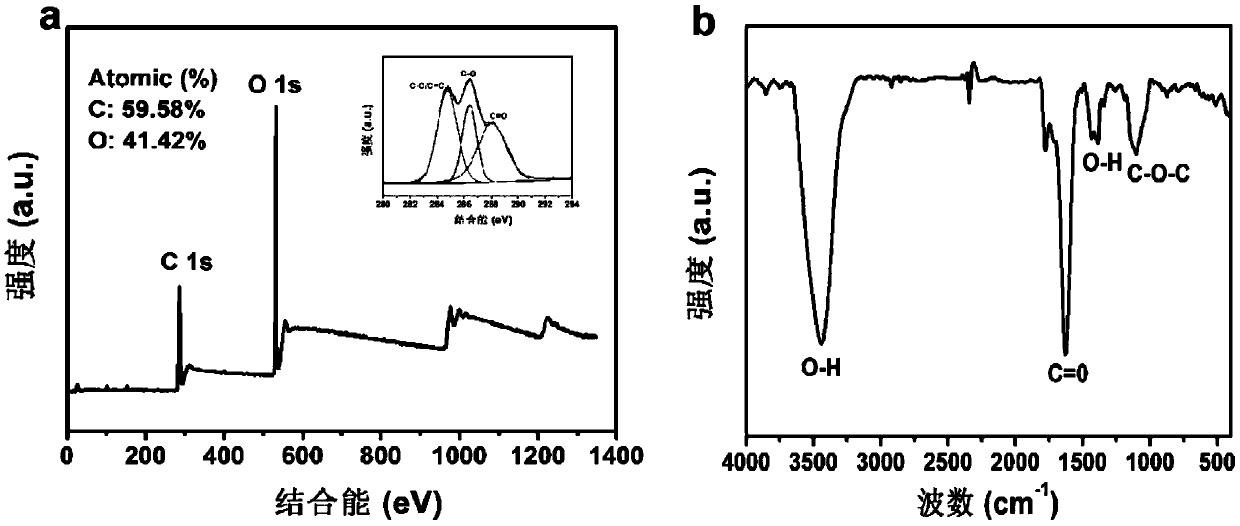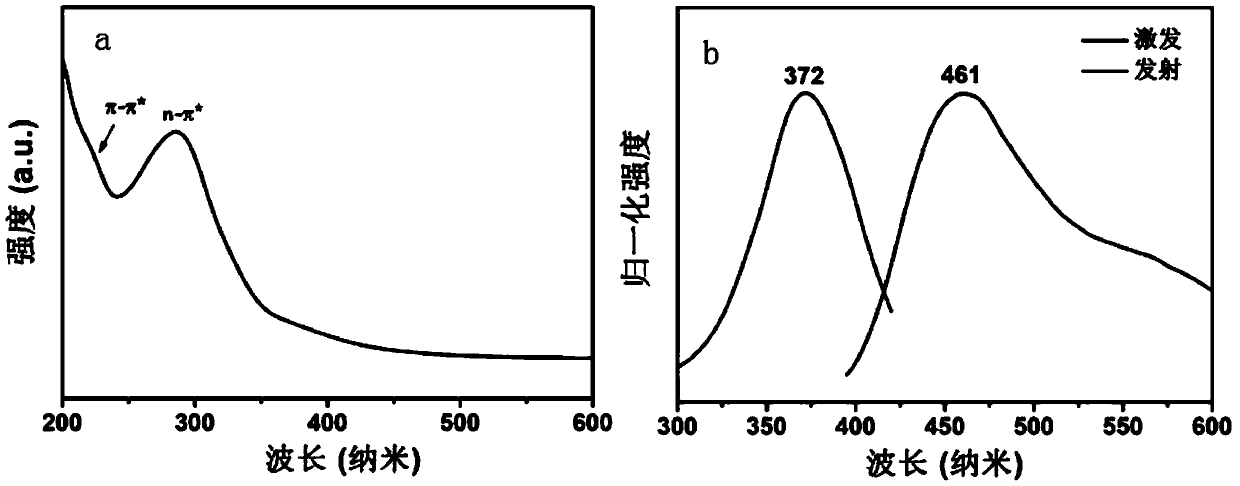Application of carbon-based nano material in preparation of drug for relieving or treating HD
A technology of carbon-based nanomaterials and medicines, applied in nanomedicine, drug combination, nanotechnology, etc., can solve difficult problems and achieve the effect of small particle size and large specific surface area
- Summary
- Abstract
- Description
- Claims
- Application Information
AI Technical Summary
Problems solved by technology
Method used
Image
Examples
preparation example Construction
[0036] The preparation method of the carbon-based nanomaterial of the present invention is as follows: react vitamin solution or retinoid solution at 170°C to 190°C for 1.5h to 2.5h; then naturally cool to room temperature and then filter; then dialyze the filtrate and freeze-dry to obtain Carbon-based nanomaterials, called CDs.
[0037] The descriptions of specific exemplary embodiments of the present invention are presented for purposes of illustration and description. These descriptions are not intended to limit the invention to the precise form disclosed, and obviously many modifications and variations are possible from the teachings of the invention. The exemplary embodiments were chosen and described in order to explain the specific principles of the invention and its practical application, thereby enabling others skilled in the art to make and use various exemplary embodiments of the invention, as well as various Choose and change. It is intended that the scope of the...
Embodiment 1
[0038] Example 1 Preparation of carbon-based nanomaterials (CDs)
[0039] Weigh 1.00 g L-Vitamin C (L-Vc) and dissolve it in 10 mL H 2 O, sonicate for 20 min to fully dissolve; transfer the dissolved Vc solution to a hydrothermal kettle, react at 180 °C for 2 h, cool to room temperature naturally after the reaction, and then filter the reaction solution with a sandstar funnel to remove insoluble particles. Then use a 500-1000 Da dialysis bag to purify in water, and finally obtain a brown-red CDs solution; freeze the brown-red CDs solution in a -80 °C refrigerator for 2 h, and then use an Alpha1-4LSCplusRC6 freeze dryer at -80 °C under vacuum Freeze-dried at 10 Pa for 48 h to obtain carbon-based nanomaterials CDs. Dissolve the obtained carbon-based nanomaterial CDs in pure water to obtain an aqueous solution of carbon-based nanomaterial CDs, which is used in Examples 2 to 4.
[0040] Ultraviolet Spectrum: Dilute the CDs aqueous solution to a certain concentration, transfer it...
Embodiment 2
[0046] Example 2 CDs effectively inhibit mHtt aggregation
[0047] Transmission Electron Microscopy Cell samples: Neuro-2a (N2a) cells with C 2 N materials were co-incubated in serum-free DMEM medium for 24 hours, fixed the cells with glutaraldehyde for 10 minutes, scraped off the cells and dripped them on the copper grid, and carried out negative staining with 2% phosphotungstic acid. Photographed under an electron microscope. Protein sample: drop mHtt monomer (100 μM) on the copper grid and let it stand for 2 minutes, absorb excess sample with filter paper, wash biological samples twice with ultrapure water, negatively stain the sample with 2% phosphotungstic acid for 2 min, absorb with filter paper Remove excess phosphotungstic acid and dry overnight.
[0048] Laser confocal detection of CDs entering the nucleus CDs were incubated with N2a cells for 12 hours, the medium was aspirated, and the nuclear dye Red Dot1 was added to incubate for 10 minutes, and then imaged and o...
PUM
| Property | Measurement | Unit |
|---|---|---|
| particle size | aaaaa | aaaaa |
| particle diameter | aaaaa | aaaaa |
Abstract
Description
Claims
Application Information
 Login to View More
Login to View More - R&D
- Intellectual Property
- Life Sciences
- Materials
- Tech Scout
- Unparalleled Data Quality
- Higher Quality Content
- 60% Fewer Hallucinations
Browse by: Latest US Patents, China's latest patents, Technical Efficacy Thesaurus, Application Domain, Technology Topic, Popular Technical Reports.
© 2025 PatSnap. All rights reserved.Legal|Privacy policy|Modern Slavery Act Transparency Statement|Sitemap|About US| Contact US: help@patsnap.com



